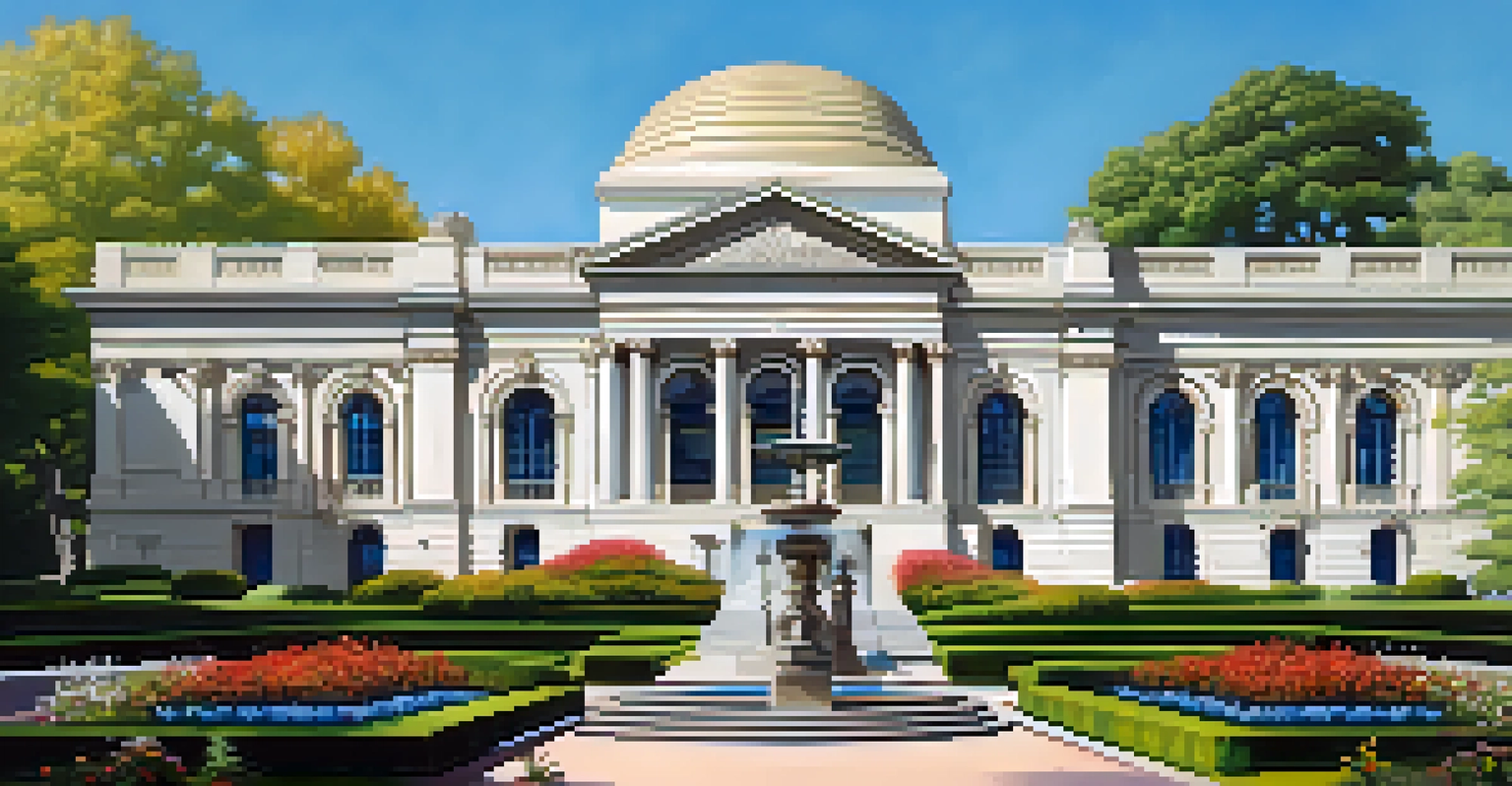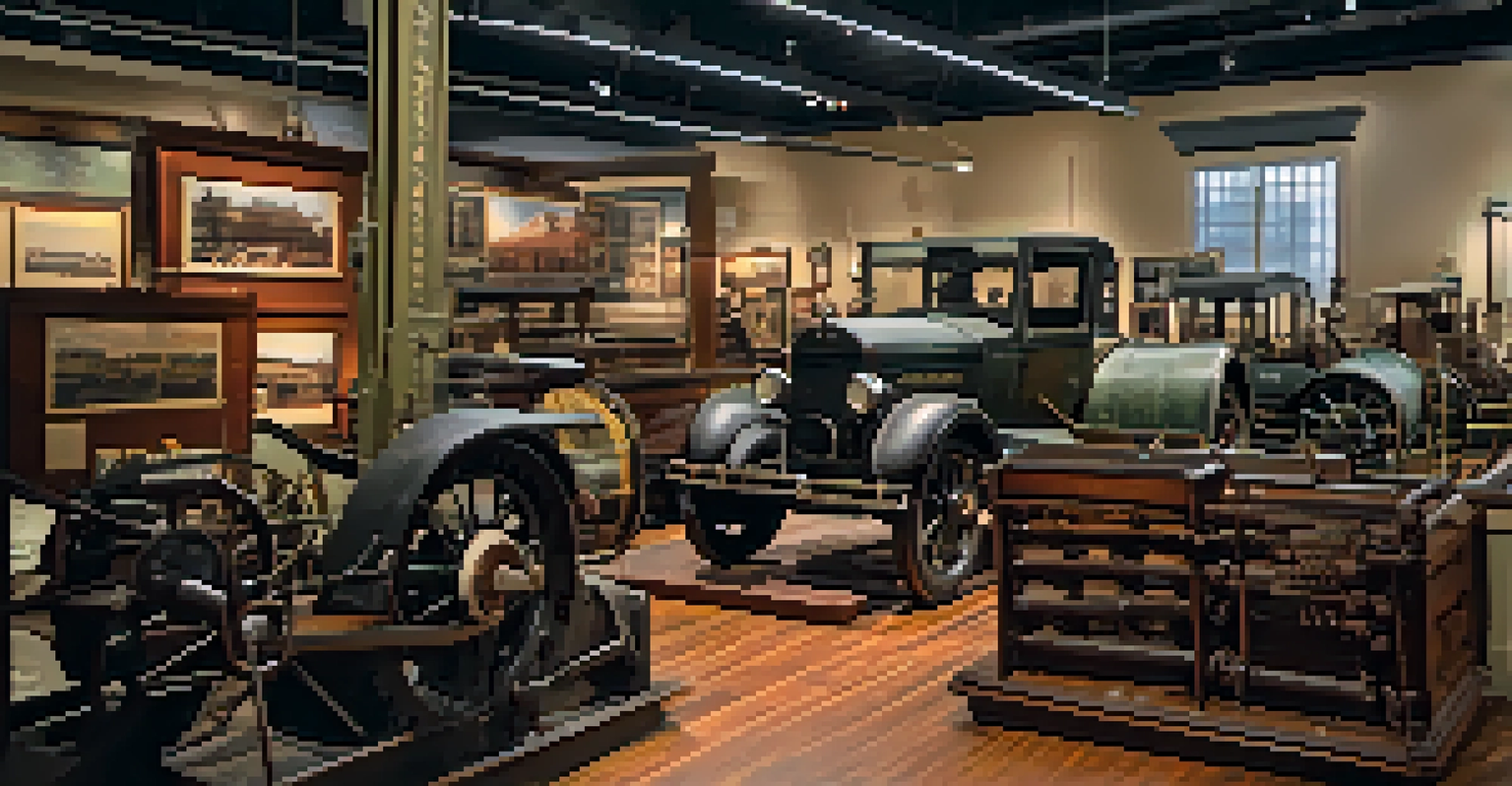Preserving Newark's History: Museums and Landmarks

The Importance of Preserving Newark's History
Newark, New Jersey, is a city steeped in rich history and culture. From its founding in 1666 to its role in the industrial revolution, every corner has a story to tell. Preserving this history is crucial not only for the city's identity but also for future generations to understand their roots.
Those who cannot remember the past are condemned to repeat it.
Historically significant sites can serve as a connection between the past and present, fostering a sense of pride among residents. By maintaining these landmarks, we keep the narratives alive, allowing them to inspire and educate. Each museum and landmark serves as a chapter in Newark's ongoing story.
Moreover, preserving history can stimulate local economies through tourism. Visitors drawn to historical sites often spend money on local businesses, creating a win-win situation for both the community and its heritage. This symbiotic relationship underscores the importance of safeguarding Newark's historical assets.
Exploring the Newark Museum of Art
The Newark Museum of Art is a treasure trove of cultural and historical artifacts, making it a must-visit for anyone interested in the city's heritage. Established in 1909, it houses a vast collection, including American art, decorative arts, and even Tibetan art. The museum not only showcases local history but also connects Newark to global narratives.

One of the highlights of the museum is its beautiful outdoor sculpture garden, which invites visitors to explore art in a serene setting. This blend of indoor and outdoor experiences allows for a deeper appreciation of art's role in society. The museum often hosts community events, further enhancing its role as a cultural hub.
Preserving Newark's Rich Heritage
Maintaining historical sites fosters community pride and ensures future generations understand their roots.
In addition to its collections, the museum offers educational programs that engage various age groups. Workshops, lectures, and guided tours provide opportunities for learning and discussion, making history accessible to all. By fostering a love for art and history, the Newark Museum plays a pivotal role in preserving the city's cultural legacy.
The Historic Branch Brook Park
Branch Brook Park is not just a park; it's a living piece of Newark's history. Designed in the late 19th century by renowned landscape architect Frederick Law Olmsted, it showcases the city's commitment to creating beautiful public spaces. The park is especially famous for its cherry blossom trees, attracting thousands each spring.
History is not a burden on the memory but an illumination of the soul.
Walking through Branch Brook Park feels like stepping back in time, with its historic structures and serene landscapes. The park offers a variety of recreational activities, from jogging to picnicking, while also providing a space for community events. This blend of history and leisure makes it a vital part of Newark's cultural fabric.
Moreover, the preservation efforts for Branch Brook Park highlight the importance of maintaining green spaces in urban environments. These efforts ensure that future generations can enjoy the park's beauty and historical significance. It's a reminder that nature and history can coexist harmoniously.
The New Jersey Historical Society: A Gateway to the Past
The New Jersey Historical Society is another cornerstone of Newark's historical preservation efforts. Founded in 1828, it aims to collect and preserve the state's rich heritage, with a significant focus on Newark's local history. Its extensive archives and exhibitions provide a comprehensive look at the narratives that shaped New Jersey.
Visitors can explore various exhibits that showcase everything from the American Revolution to the civil rights movement. The society also hosts lectures and workshops, creating a space for dialogue and learning. This commitment to education reinforces the importance of understanding history in today's context.
Role of Local Institutions
Organizations like the Newark Museum of Art and the New Jersey Historical Society play vital roles in educating the public about the city's history.
Moreover, the society actively engages the community through outreach programs. By partnering with local schools and organizations, it helps foster a sense of local pride and awareness. This collaborative spirit is essential for preserving Newark's history and ensuring it remains relevant.
The Legacy of Newark's Industrial Past
Newark's industrial past is a crucial part of its identity, marked by factories and manufacturing hubs that once drove the economy. This legacy is preserved in various landmarks and museums that pay homage to the workers and innovations that shaped the city. Understanding this history provides insight into the city's evolution and resilience.
Sites like the Ironbound district highlight Newark's immigrant history, showcasing the diverse cultures that contributed to its industrial growth. Walking through these neighborhoods, visitors can see the remnants of factories and hear the stories of those who worked there. This rich tapestry of narratives adds depth to the city's historical landscape.
Moreover, preserving Newark's industrial landmarks is vital for acknowledging the contributions of the working class. It serves as a reminder of the struggles and triumphs of those who built the city's economy. By celebrating this heritage, Newark honors its past while looking toward a brighter future.
The Role of Community in Historical Preservation
Community involvement is essential in preserving Newark's history, as local residents often have the most intimate knowledge of their neighborhoods. Grassroots efforts, such as neighborhood associations and historical societies, play a pivotal role in advocating for the protection of landmarks. These organizations help raise awareness and foster a sense of ownership among residents.
Events like heritage festivals and historical walking tours enable the community to connect with their history in engaging ways. These initiatives not only educate but also strengthen community bonds through shared experiences. When people come together to celebrate their history, it enriches their understanding of their identity.
Community's Impact on Preservation
Grassroots efforts and local engagement are essential for advocating the protection of Newark's historical landmarks.
Furthermore, community-driven preservation efforts can influence local policies and funding. By voicing their concerns and desires, residents can advocate for the safeguarding of historical sites. This grassroots approach ensures that the history remains a priority, reflecting the values and identities of those who call Newark home.
Future of Newark's Historical Preservation
Looking ahead, the future of Newark's historical preservation relies on a combination of community engagement, education, and innovative approaches. As the city continues to evolve, balancing development with preservation will be crucial. Creating sustainable practices that respect historical sites while accommodating growth is a challenge that can be met with collaborative efforts.
Emerging technologies, such as virtual reality and digital archiving, offer exciting possibilities for historical preservation. These tools can enhance visitor experiences and provide broader access to Newark's history. By embracing innovation, the city can create new ways for people to engage with their heritage.

Ultimately, the commitment to preserving Newark's history is a shared responsibility among residents, local organizations, and governmental entities. By prioritizing this mission, Newark can ensure that its rich past is honored while paving the way for a vibrant future. This balance of respect for history and forward-thinking will define Newark for generations to come.